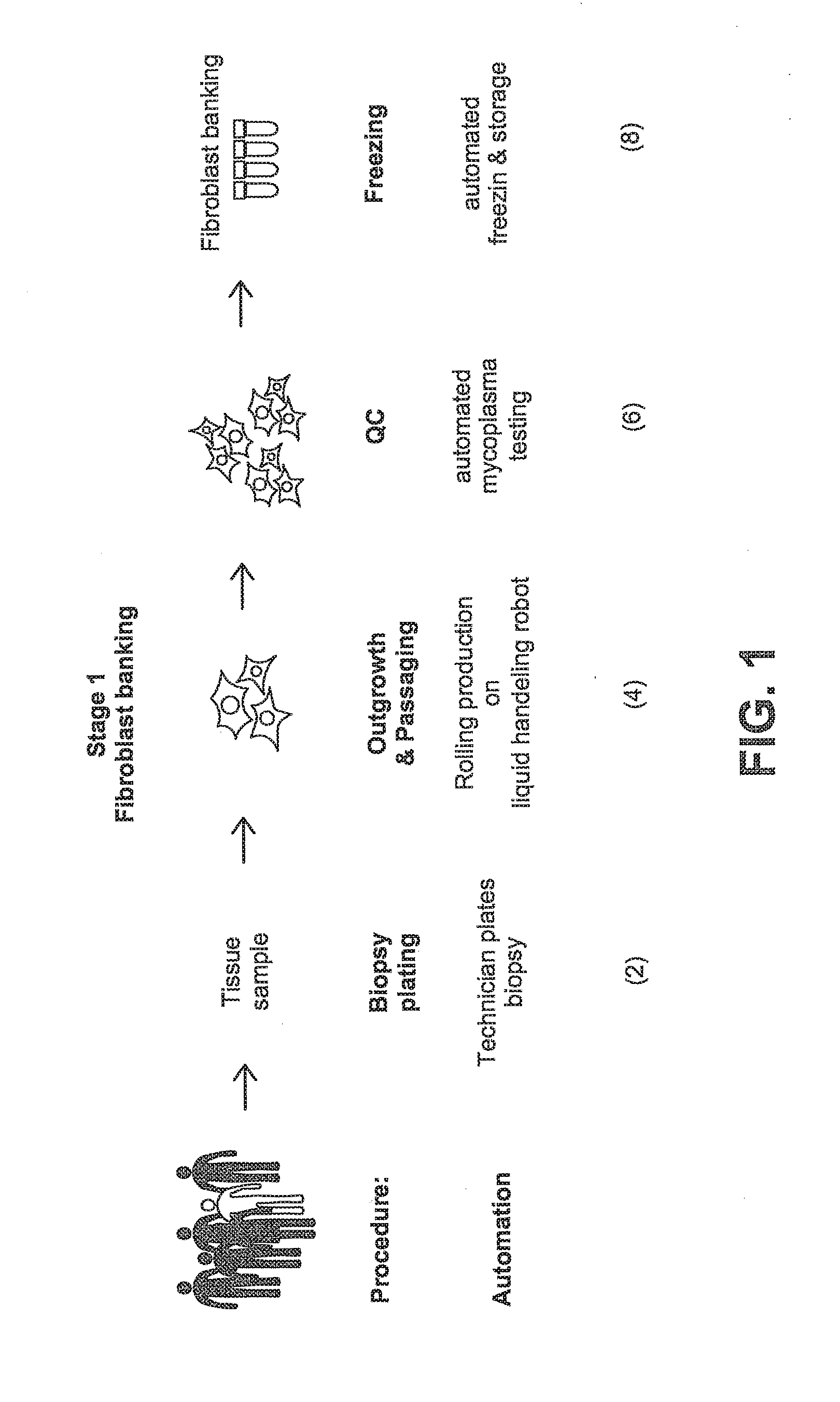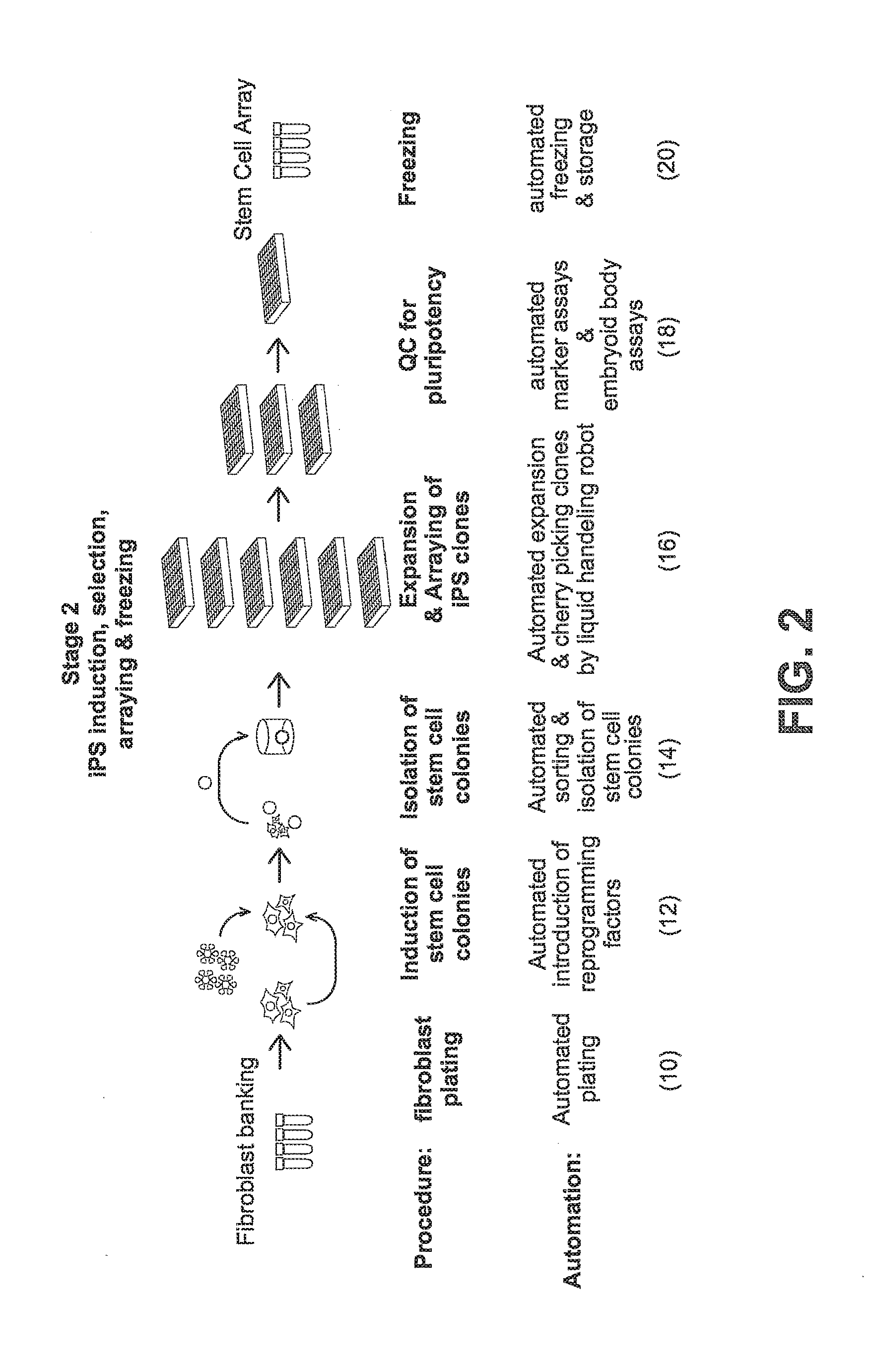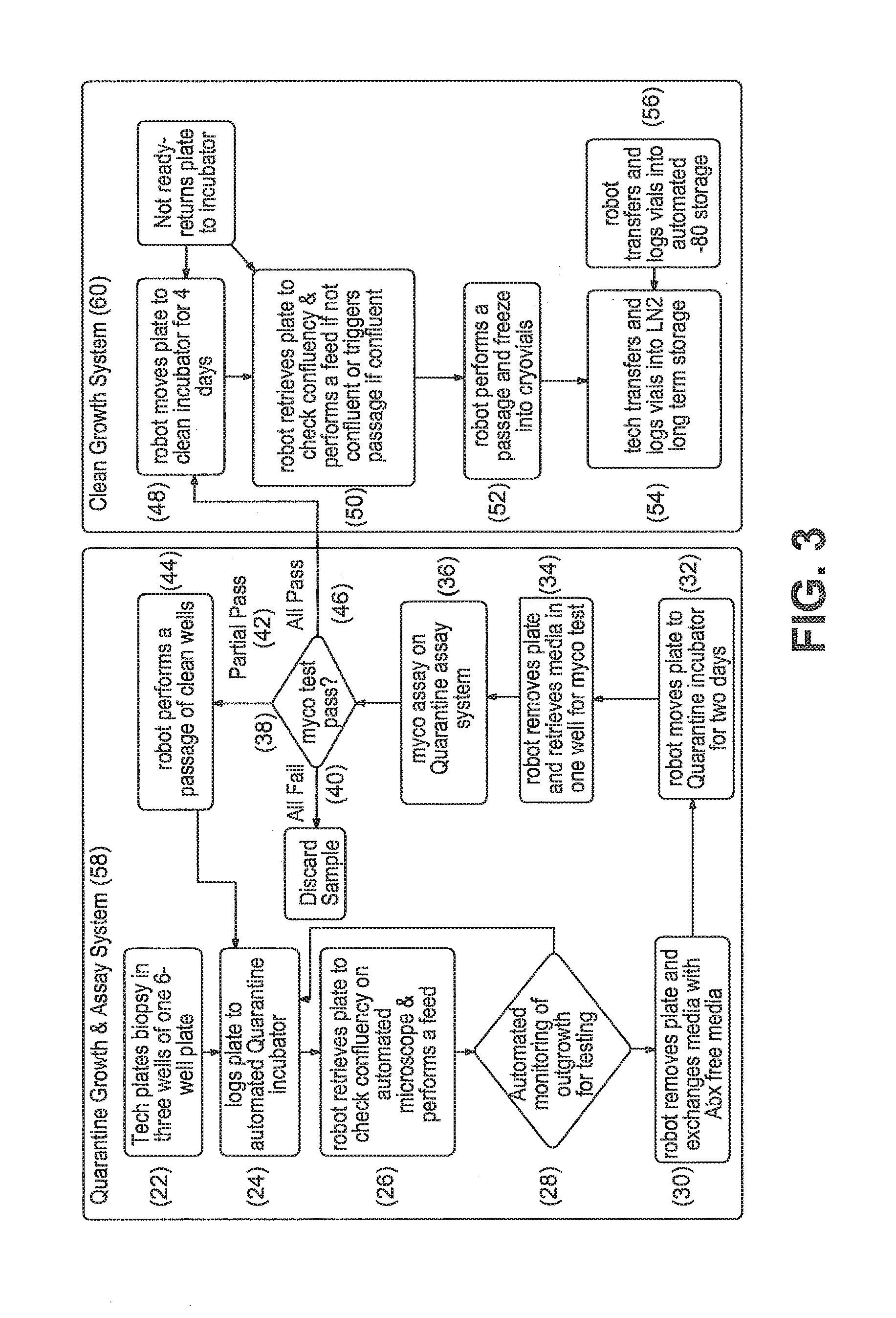Systems and methods for producing stem cells differentiated cells, and genetically edited cells
- Summary
- Abstract
- Description
- Claims
- Application Information
AI Technical Summary
Benefits of technology
Problems solved by technology
Method used
Image
Examples
example 1
Illustrative Automated Systems
[0264]FIG. 5A, 5B, 5C illustrate an example of the equipment configuration needed to accomplish the workflow. FIG. 5A shows a system configuration for the automated expansion and quality control of a fibroblast bank. FIG. 5B shows a system configuration for the automated thawing of patient samples, such as fibroblasts, automated introduction of reprogramming factors with the patient samples, such as fibroblasts, automated cell sorting with MultiMACS, and automated colony identification and reformatting. FIG. 5C shows a system configuration for the automated expansion of iPSC clones, automated Embryoid Body production, and automated freezing.
Automated Derivation of a Fibroblast Cell Bank
[0265]As an example, the hardware configuration used to accomplish the derivation of a fibroblast bank consists of a Hamilton STARlet liquid handling robot (100) connected to the following hardware components: a Cytomat 24C GLS automated incubator (108) that allows for th...
example 2
Production of a Fibroblast Bank for Reprogramming
[0308]The first step in the workflow to derive iPSCs from patient samples is to obtain and expand adult cells. This is accomplished, for example, by obtaining a skin punch biopsy or discarded dermal tissue, then isolating and expanding cultures of fibroblasts from the tissue. In the workflow described in the present Example, this is accomplished by the automated system comprised of Systems 1 and 2. The automated components of System 1 and 2 (100-120) and System 3 (122-132, 154, 190) perform the steps needed to derive a fibroblast bank stored in cryotubes (61) from patient samples, including plating of a patient biopsy (2, 22-24), outgrowth and passaging (4, 26-32) (rolling production on liquid handling robot), QC (6, 34-46) (automated testing for mycoplasma), and automated freezing on the liquid handling robot (8, 48-56). For example, the workflow and decision tree for production of fibroblasts from biopsies is divided into Quarantine...
example 3
REFERENCES FOR EXAMPLE 3
[0369]1. Takahashi K, Yamanaka S (2006) Induction of pluripotent stem cells from mouse embryonic and adult fibroblast cultures by defined factors. Cell 126: 663-676. doi: 10.1016 / j.cell.2006.07.024.[0370]2. Kiskinis E, Eggan K (2010) Progress toward the clinical application of patient-specific pluripotent stem cells. J Clin Invest 120: 51-59. doi: 10.1172 / JCI40553.[0371]3. Lee G, Papapetrou E P, Kim H, Chambers S M, Tomishima M J, et al. (2009) Modelling pathogenesis and treatment of familial dysautonomia using patient-specific iPSCs. Nature 461: 402-406. doi: 10.1038 / nature08320.[0372]4. Maehr R, Chen S, Snitow M, Ludwig T, Yagasaki L, et al. (2009) Generation of pluripotent stem cells from patients with type 1 diabetes. Proc Natl Acad Sci USA 106: 15768-15773. doi: 10.1073 / pnas.0906894106.[0373]5. Zhu S, Li W, Zhou H, Wei W, Ambasudhan R, et al. (2010) Reprogramming of Human Primary Somatic Cells by OCT4 and Chemical Compounds. Cell stem cell 7: 651-655. do...
PUM
 Login to View More
Login to View More Abstract
Description
Claims
Application Information
 Login to View More
Login to View More - R&D
- Intellectual Property
- Life Sciences
- Materials
- Tech Scout
- Unparalleled Data Quality
- Higher Quality Content
- 60% Fewer Hallucinations
Browse by: Latest US Patents, China's latest patents, Technical Efficacy Thesaurus, Application Domain, Technology Topic, Popular Technical Reports.
© 2025 PatSnap. All rights reserved.Legal|Privacy policy|Modern Slavery Act Transparency Statement|Sitemap|About US| Contact US: help@patsnap.com



